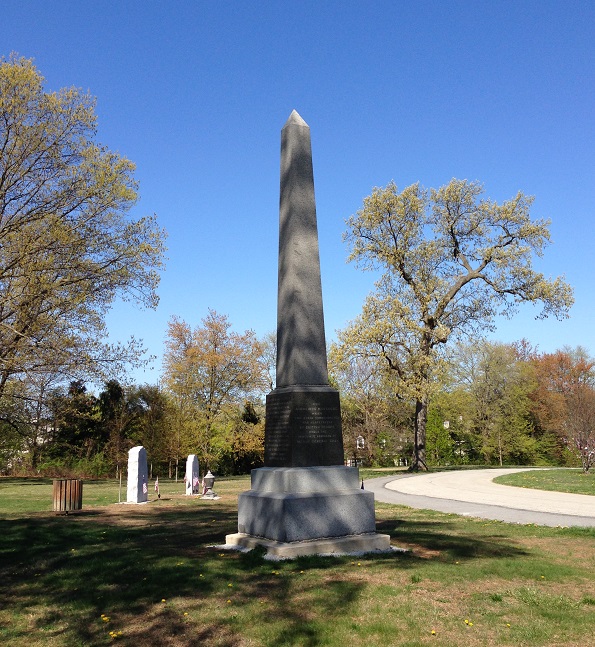Before we married, Mr. History Tourist worked in an area of suburban Philadelphia called Paoli. The name sounded vaguely Italian but it had been around since the colonial era and I thought it unlikely that colonial Pennsylvanians would name anything Italian. Mid-Atlantic colonists, like their New England brethren, seemed all about the English. But I was wrong. Paoli, while not Italian, is a close cousin: Corsican.
Pasquale di Paoli (1725 – 1807) was president of Corsica’s governing body and wrote the Corsican constitution. When the French took over Corsica in 1768, he became the leader of the Corsican resistance. For that reason, and because 18th century colonists knew and cared a lot more about international affairs than I gave them credit for, the General Paoli Tavern was named after him. And the area around the popular tavern became known as Paoli. In fact, there are lots of places — towns, buildings, parks — across the US called Paoli. Who knew?
Something else I didn’t know about Paoli, Pennsylvania, despite the numerous times I’d been there when Mr. HT and I were dating: there was a Battle of Paoli during the Revolutionary War.
The British were on their way to capture Philadelphia in September 1777 when George Washington sent General Anthony Wayne and 2200 men to stop them. Wayne thought that the British didn’t know that he was following them. Wayne thought wrong. When he and his men stopped to camp near Paoli Tavern – two miles from the British camp – the British attacked.
It happened at midnight and the British used only swords and sabers, so it seems that it was a particularly slashy, gruesome fight. There were less than a dozen casualties on the British side and almost 300 on the American. The Battle came to be known as the Paoli Massacre and, according to the Paoli Battlefield brochure, “Remember Paoli” became a colonial rallying cry. Again, who knew?
Forty acres of the battlefield is now the Paoli Battlefield Historical Park and Paoli Memorial Ground (in Malvern, Pennsylvania). I learned about it from Twitter and made a point to stop by when I was in the area for a family gathering last weekend. Twenty-three acres of the battlefield are cleared and used for community events, and the rest are woods with walking paths. There are informational signs stationed all around the park, telling what stood or happened there in 1777.
A mound, surrounded by a stone wall, marks where 53 of the soldiers who died in the battle are buried. A stone obelisk, erected in 1817, sits on top of the mound. It’s the 2nd oldest war memorial in the US. The cannons flanking the gates to the burial site are Revolutionary era but not from Paoli.
[Of course, having read that the monument is the 2nd oldest, I had to look up what was the oldest war memorial in the US. It’s the Tripoli Monument, finished in 1806 and now at the US Naval Academy in Annapolis. Thomas Jefferson ordered it to honor the sailors who fought Barbary Coast Pirates to protect American interests in the Mediterranean. From the halls of Montezuma to the shores of Tripoli goes the Marine hymn. Their fight against the Barbary pirates is what they’re talking about. Who knew #3. I always thought it was a WWI reference.]
A large granite obelisk (2nd photo in the post) was erected in 1877, on the 100th anniversary of the battle. On one side, it says: “The atrocious massacre which this stone commemorates was perpetrated by British troops under the immediate command of Major General Grey.” Tell us how you really feel.





I share your “who knew”s! Thanks for the education! I actually thought that was a World War II reference in the Marine Hymn, but never really thought about when it was written.
Now I have to go look up the Halls of Montezuma. I get visions of Aztecs.